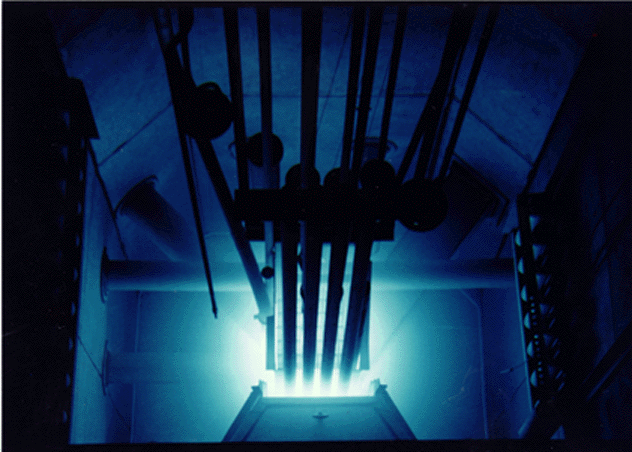February 7: Speaking at a Laser Science exhibition in Tehran, Iranian President Mahmoud Ahmadinejad announced today that his country will begin the production of highly enriched uranium for its medical reactor.At present Iran has been enriching uranium only to 3.5 percent, the level needed for use in its Bushehr nuclear power plant. The Tehran medical reactor will require 20 percent enriched uranium, a significant increase but still well short of the levels needed for weapons.
Ali Akbar Salehi, head of Iran's Atomic Energy Organization, announced that Tehran has informed the United Nations' nuclear watchdog that it intends to launch construction of 10 new nuclear fuel plants in the Persian calendar year starting March 2010 and begin producing 20% enriched uranium to provide fuel for a Tehran medical reactor.[...]
Iran lacks a plant to turn enriched uranium into fuel plates for the medical reactor. Few experts believe it has the infrastructure to build 10 enrichment facilities any time soon.
Any uranium enriched to 19.75% and fed through the reactor is transformed into isotopes and then used up.[...]
It would be dangerous if Iran determined to enrich to 95% to make a bomb. In order to do so, it would have to evade all US electronic surveillance, withdraw from the Nuclear Non-Proliferation Treaty and throw out the UN inspectors. No country being actively and continuously inspected by the IAEA has ever developed an atomic bomb.
[...]
[If] all Iran does is enrich to 19.75% (the upper level of low-enriched uranium) for the isotope reactor and then use up the isotopes, this step is the least dangerous one it could take.
[...]
The idea that Iran could conceal a major enrichment facility somewhere is far-fetched, because enrichment is a water- and electricity-intensive activity that can be detected. Even just the building activity for the new small facility near Qom showed up on US satellite surveillance.
Iran has developed plans to use naturally occurring uranium as a “target” for producing an important medical diagnostic isotope of molybdenum, an isotope whose decay product can be used to scan for cancers in bone, heart, lung, and kidney. Iran already imports a sizable quantity of this pharmacological radionuclide but producing it indigenously would not only save Iran a considerable amount of money each year, much more than it would pay for the fuel for the reactor it would use to produce it, but also allow a more efficient use of this short lived isotope by preventing the decay of nearly half of the amount bought before it even reached the patients.[...]
Sending essentially all of its current LEU stock that it has produced over the past two and half years out of the country is a big deal for Iran. Iran has experienced a history of being denied access to the nuclear infrastructure it bought into in the West. [...] It is a tremendous leap of faith for Iran to send this material out of country and the world should appreciate it. It is also, or at least should be, a big deal for the West.
Oh ho. It's a big deal, alright.
Iranian President Mahmoud Ahmadinejad ordered his country's nuclear agency to begin enriching uranium for use in a medical-research reactor, ratcheting up Tehran's defiance over Western demands that it curb its nuclear ambitions.[...]
U.S. Defense Secretary Robert Gates said Sunday he believed there was still time for sanctions to work to halt Iran's nuclear program despite the Iranian president's decision.
[Secretary of State Hillary] Clinton again repeated that the new facility near Qom is evidence that Iran intends to build a bomb. But then head of the International Atomic Energy Agency Mohammed Elbaradei was invited to inspect it in late October and found a 'hole in a mountain' with no equipment or uranium on-site. The facility is too small to be an efficient producer of High Enriched Uranium for bombs, and is more likely intended to serve as a repository of equipment and know-how that cannot be bombed by the Israelis or Americans.[...]
[Clinton] argued that attempting to engage [...] problem countries made it easier, when [...] negotiations failed, to convince countries such as Russia and China [...] to ratchet up sanctions at the UN. But if all engagement accomplishes is to make imposition of sanctions easier, it isn't really engagement, it is just posturing.
I got to see one of these once. It's really kind of serene and pretty looking, if a bit unsettling knowing what it is you're looking at. It was on the University of Missouri campus where they irradiate gemstones (topaz isn't naturally blue) - or did at that time. Directly after 9/11, they installed some anti-terrorist measures which were truly laughable, but I suppose made the politicians happy and much of the population feel (falsely) safer.
And on that loosely related topic (irradiation of gemstones), there's an interesting article at Colored-Stone.com on the processing and regulation (or not) of irradiated topaz and how the NRC screwed the University of Missouri's - and therefore the US's trade in them, should you be interested.
....but hey, do what you want....you will anyway.














No comments:
Post a Comment
Comments are moderated. There may be some delay before your comment is published. It all depends on how much time M has in the day. But please comment!